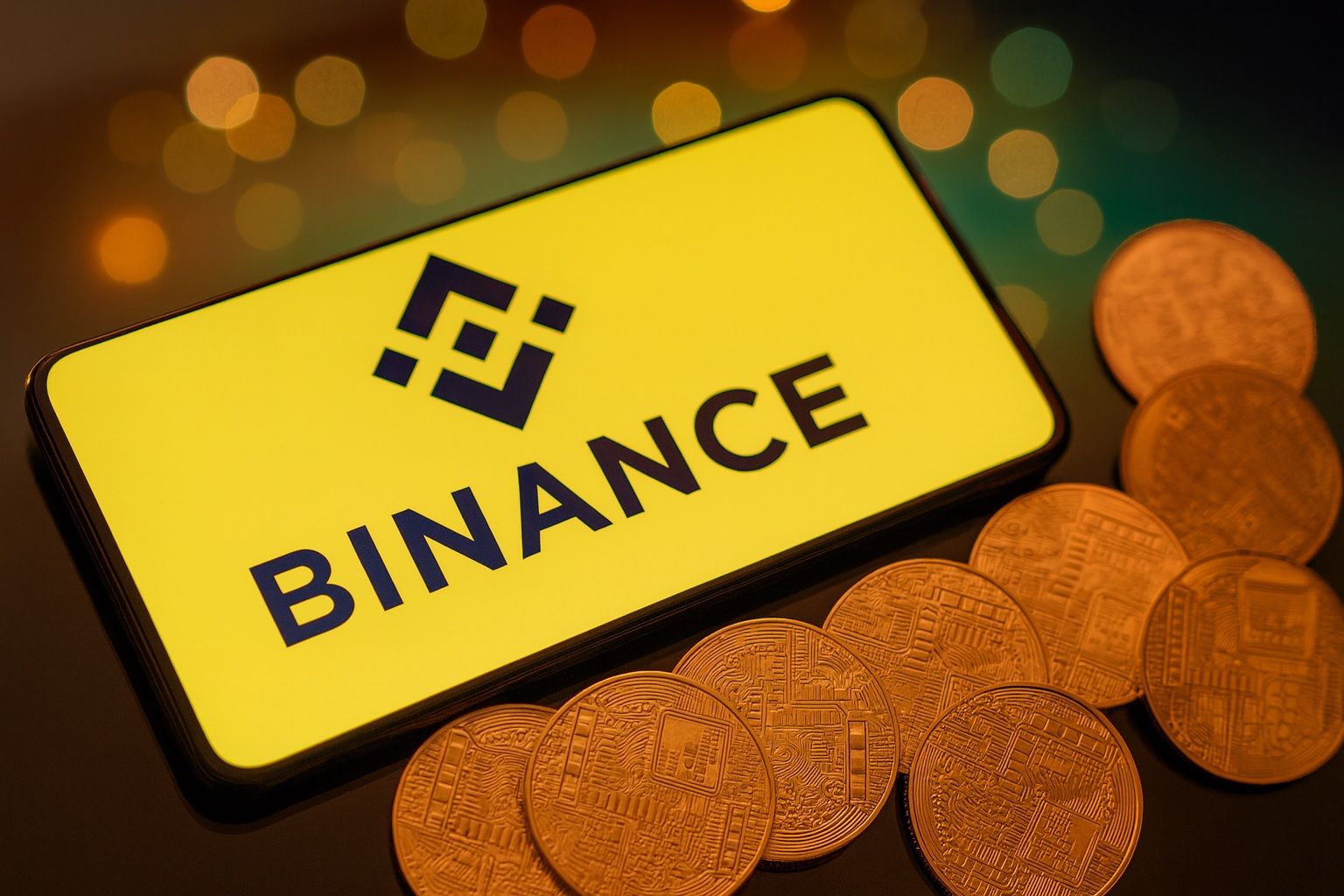- Historic Crypto Move: Kyrgyzstan has launched its first national stablecoin – known as KGST, pegged 1:1 to the Kyrgyzstani som – and simultaneously rolled out a digital som central bank digital currency (CBDC) pilot in partnership with crypto exchange Binance [1] [2]. The stablecoin operates on Binance’s BNB Chain, marking one of the first times a country issues a state-backed coin on a private blockchain network [3].
- Binance’s CZ on Board: Binance founder Changpeng “CZ” Zhao (freshly pardoned by the U.S. president from prior charges [4]) has been advising Kyrgyzstan’s government on digital assets since May [5]. CZ personally attended the rollout meeting in Bishkek and confirmed on X (Twitter) that the national stablecoin launched on BNB Chain, the CBDC (digital som) is ready for use in government payments, and a national crypto reserve is set up with Binance’s BNB token included [6].
- Dual CBDC–Stablecoin Strategy: Kyrgyzstan is pursuing a “dual-track” approach by testing both a CBDC and a stablecoin in parallel [7] [8]. President Sadyr Japarov created a National Crypto Council this year to oversee blockchain development and regulation [9]. The digital som pilot will connect commercial banks, then government treasuries for payments, and finally enable offline transactions before a nationwide rollout [10]. The central bank said “after successfully piloting all three phases, the platform will be rolled out nationally and scaled” [11].
- Modernization & Investment Goals: Officials say these initiatives aim to modernize payments, boost financial inclusion, and attract fintech investment into Kyrgyzstan [12]. The government has instructed its crypto committee to get the KGST stablecoin listed on international exchanges and formalize a national crypto reserve within two months [13]. “We presented Kyrgyzstan’s potential in developing a digital economy,” President Japarov said earlier this year, highlighting the country’s ambition to become a regional crypto hub [14].
- Global Context & Market Reaction: Kyrgyzstan’s move comes amid a worldwide surge in digital currencies. Over 100 countries are exploring CBDCs, though only a few (e.g. Bahamas, Nigeria) have launched them [15]. Stablecoins have exploded into a $170+ billion market in 2025, with Tether’s USDT alone capturing ~58% share [16]. Clearer regulations – like a new US law requiring stablecoin reserves [17] – are legitimizing the sector. Notably, the day Kyrgyzstan announced KGST, Bitcoin soared past $113,000 and Binance’s BNB jumped ~4.5%, reflecting bullish sentiment as crypto markets hit $3.7 trillion in value [18].
Kyrgyzstan’s Bold Step into State-Backed Crypto
In a landmark for Central Asia, Kyrgyzstan has officially introduced a national digital currency in two forms: a som-pegged stablecoin and a central bank digital currency pilot. President Sadyr Japarov announced that the new stablecoin “KGST” – designed to maintain a 1:1 value with the Kyrgyzstani som – launched on Binance’s BNB Chain [19]. Simultaneously, the government unveiled a digital version of the som (a CBDC) now ready for government payment use [20].
This dual launch positions Kyrgyzstan among the first countries worldwide to deploy both a stablecoin and a CBDC together. It’s a surprising move from a nation of 7 million that until recently was better known for remittances than fintech. Yet in the past few years Kyrgyzstan has pivoted to become a cryptocurrency leader in Central Asia [21], enacting crypto-friendly policies and courting blockchain investment.
Changpeng “CZ” Zhao, the founder and former CEO of Binance, has played a high-profile role in this pivot. In May, CZ was appointed digital assets adviser to President Japarov [22]. He has since championed Kyrgyzstan’s crypto aspirations, even attending the National Council meeting in Bishkek on Oct. 25 when the stablecoin was launched [23]. CZ took to X (formerly Twitter) to share “Updates from Kyrgyzstan”: “The National Stablecoin launched on @BNBChain… the CBDC is ready for rollout… the National Crypto Reserve [is] set up, #BNB included.” [24] [25] His tweet underscored that Binance’s BNB token will form part of Kyrgyzstan’s new national crypto reserve, reflecting a close partnership.
Launching KGST on Binance’s BNB Chain is notable – it effectively outsources the technology backbone to a platform built by a private company (albeit one of the world’s largest crypto firms). Kyrgyz officials appear comfortable leveraging Binance’s infrastructure to accelerate their digital currency rollout, rather than building entirely from scratch. Local media report that Kyrgyzstan’s crypto committee has been tasked to ensure KGST gets listed on international trading platforms to boost its liquidity and usage beyond domestic borders [26]. This suggests the Kyrgyz stablecoin could soon trade on global crypto exchanges, allowing users abroad (such as Kyrgyz migrant workers in Russia) to easily acquire and use it.
For now, Kyrgyz authorities haven’t released technical details like the smart contract design or reserve management of KGST. But given the som’s relatively stable value regionally, a som-pegged token could serve as a digital bridge for remittances and trade. Cross-border transfers make up roughly 30% of Kyrgyzstan’s GDP, and earlier plans for a gold-backed USD stablecoin (USDKG) were aimed at facilitating those flows [27]. KGST may similarly target fast, low-cost transfers – especially within Eurasian Economic Union corridors – by transacting over BNB Chain instead of traditional banks.
Inside the Digital Som and Crypto Reserve Plan
Kyrgyzstan’s digital som project is being handled by the National Bank of the Kyrgyz Republic (NBKR). The central bank is launching a three-phase pilot to test the CBDC infrastructure [28]. In Phase 1, commercial banks will connect to the digital som platform to enable interbank transfers. Phase 2 will link the system to the government’s Central Treasury for social welfare and government payments – indicating the CBDC could be used to distribute salaries, pensions or aid. The final Phase 3 will trial transactions in offline or low-connectivity environments, an important feature for a country with remote mountain communities [29]. Only after these pilots will the NBKR consider a full national rollout.
If all goes well, “after successfully piloting all three phases, the platform will be rolled out nationally and scaled,” the central bank said in a statement [30]. This cautious approach aligns with earlier NBKR remarks that a decision on formally issuing a CBDC would be made by end of 2026 [31]. Kyrgyzstan is thus moving ahead with experimentation, even as it evaluates long-term implications.
In the meantime, the stablecoin KGST is live now and will coexist with the pilot CBDC. How do they differ? Stablecoins like KGST are issued as tokens (in this case on BNB Chain) presumably by a designated entity (perhaps under the Ministry of Finance’s oversight). They rely on reserves to maintain their peg – likely meaning for every 1 KGST in circulation, 1 Kyrgyz som (or equivalent assets) is held in reserve. The CBDC, by contrast, is a digital form of central bank money – essentially an electronic som – issued and controlled by the central bank itself.
Kyrgyzstan is effectively hedging its bets by exploring both models. “Kyrgyzstan is one of the few Central Asian nations to roll out a state-backed stablecoin while pursuing a digital som pilot, signaling a dual-track approach to digital finance,” observed fintech analyst Abdelaziz Fathi [32] [33]. This dual strategy could allow the country to harness benefits of each: the stablecoin (KGST) can leverage existing crypto ecosystems for quick adoption and cross-border use, while the CBDC ensures the central bank retains direct control over sovereign digital money for critical domestic functions.
Another pillar of Kyrgyzstan’s plan is establishing a National Crypto Reserve to back these digital assets. President Japarov’s crypto council is exploring using major cryptocurrencies (like Bitcoin and BNB) as reserve assets [34] [35]. In fact, back in May, CZ recommended that Kyrgyzstan include Bitcoin and BNB as foundational assets in its crypto reserve – advice that seems to have been heeded [36] [37]. As of the latest announcement, the reserve “includes Binance’s BNB token,” according to Japarov and CZ [38] [39]. Such a reserve could help stabilize the value of Kyrgyzstan’s digital currencies and instill confidence, much like gold or foreign exchange reserves back traditional fiat currencies.
However, relying on crypto reserves comes with risk. Notably, a privately-issued stablecoin A5A7 based in Kyrgyzstan – backed by Russian rubles – was recently sanctioned by Western governments for allegedly helping skirt sanctions on Russia [40]. This shows that if Kyrgyzstan’s crypto initiatives inadvertently facilitate illicit finance (e.g. evading sanctions or laws), they could face international blowback. Authorities will need to build robust compliance and oversight to ensure KGST and the crypto reserve aren’t misused. In this vein, CZ has noted that law enforcement (LE) training programs are being set up in Kyrgyzstan to educate officials on crypto compliance and security [41] [42].
Why Kyrgyzstan Is Embracing Crypto
Kyrgyzstan’s government has been vocal that these digital finance moves are part of a broader economic strategy. The National Council for Digital Assets – formed by President Japarov in early 2025 – is charged with modernizing the financial system, fostering fintech innovation, and improving financial access [43]. Many citizens of Kyrgyzstan remain underbanked, and the cost and friction of international transfers (especially remittances from migrant workers abroad) is a perennial issue. By leveraging crypto technology, Kyrgyz leaders see an opportunity to “boost transparency, improve financial inclusion, and attract investment” [44].
“We presented Kyrgyzstan’s potential in developing a digital economy and demonstrated the richness of our culture and uniqueness of our national identity,” President Japarov said during CZ’s visit in May [45]. This mix of nation branding and tech ambition shows Kyrgyzstan wants to be seen as a forward-looking hub in Central Asia, not just a country reliant on traditional agriculture and foreign labor. Embracing blockchain and AI (another priority Japarov highlighted) is a way to leapfrog into the modern digital economy.
Education and talent development are also key components. Japarov has instructed ministries to ramp up digital financial literacy programs and train local specialists in blockchain and AI [46] [47]. Binance is assisting here too: Binance Academy will partner with 10 Kyrgyz universities to introduce blockchain courses, and the Binance app is being fully localized into the Kyrgyz language [48]. By investing in homegrown expertise, Kyrgyzstan hopes to create a skilled workforce that can support the country’s crypto infrastructure and perhaps even draw foreign crypto companies to set up shop in Bishkek.
Regionally, Kyrgyzstan’s crypto-friendly stance contrasts with some neighbors. While Kazakhstan and Uzbekistan have run limited crypto pilots with private firms [49], they have been more cautious on fully public national tokens. Kyrgyzstan’s willingness to launch a live stablecoin and involve Binance at a deep level is an attempt to leap ahead as the region’s crypto pioneer. “By linking blockchain policy, education and infrastructure, Kyrgyzstan is positioning itself to attract crypto firms and developers seeking a regulated foothold in Central Asia,” notes Fathi [50]. Essentially, the country is open for crypto business – and CZ himself is now virtually an ambassador encouraging crypto investors to consider Kyrgyzstan. “I encourage more crypto companies to explore the country,” CZ tweeted, touting Kyrgyzstan as a promising new frontier after his meetings with the government [51] [52].
Global Trends: Stablecoins and CBDCs Converging
Kyrgyzstan’s foray comes as stablecoins and CBDCs are hot topics worldwide. In the crypto markets, stablecoins (tokens pegged to fiat currencies or commodities) have become essential liquidity tools. The combined market capitalization of stablecoins now exceeds $170 billion, having more than doubled since early 2024 [53]. The largest, Tether’s USDT, accounts for about 58% of that market [54] and is increasingly entwined with traditional finance (Tether’s reserve holdings of U.S. Treasuries are so large that it was among the top buyers of U.S. bills in 2024) [55]. This surge has caught regulators’ attention. In the U.S., a new law (the GENIUS Act) signed in July 2025 mandates that dollar stablecoins be fully backed by liquid reserves and subjects issuers to audits [56]. The EU’s MiCA framework is likewise setting ground rules for crypto-assets. These developments give legitimate stablecoins a clearer pathway to operate, which may have emboldened Kyrgyzstan to proceed with its own.
At the same time, central banks are racing to not be left behind. Over 100 countries have initiated CBDC research or pilots [57]. China’s digital yuan is well into testing, and smaller economies from the Caribbean to West Africa have rolled out pilot digital currencies. So far, only three CBDCs are fully live for retail use – the Bahamas’ Sand Dollar, Nigeria’s e-Naira, and Jamaica’s Jam-Dex [58] – but many more are expected in the next few years. Hong Kong, Singapore, and even the EU are experimenting with wholesale or retail CBDCs [59]. Kyrgyzstan’s approach is unique in that it is launching a stablecoin (which behaves more like a private-sector initiative) alongside a CBDC pilot (a public-sector currency) simultaneously. This could become a model for other developing nations: use a nimble stablecoin to kickstart digital commerce and cross-border use cases, while methodically building a state-controlled CBDC for longer-term monetary policy goals.
Market Reaction and Future Outlook
News of Kyrgyzstan’s stablecoin launch coincided with a broader crypto market rally – whether by coincidence or as part of growing optimism for crypto adoption. On Oct. 25, as President Japarov unveiled KGST and the digital som, Bitcoin’s price shot above $113,000 (a new all-time high) amid improving global market sentiment [60]. Binance’s own BNB token, which now finds itself in Kyrgyzstan’s national reserve, climbed about 4.5% that day [61]. By Oct. 27, BNB was trading around $1,113 per coin [62] – reflecting investor confidence as Binance forges government partnerships. Kyrgyz officials will surely welcome this bullish atmosphere, as a rising crypto tide could help float their nascent stablecoin initiative with positive momentum.
Experts say the true test for KGST will be real-world usage and trust. Will Kyrgyz citizens and businesses adopt the stablecoin for daily transactions? Will expatriate workers prefer sending money home in KGST versus cash or other crypto like USDT? The government aims to encourage usage by integrating the digital som and stablecoin into government payments – e.g. paying salaries, pensions, and benefits in digital currency [63] [64]. If successful, this could quickly familiarize the public with the new tokens. However, the som’s value stability will be crucial: unlike USD-pegged stablecoins, KGST is tied to a currency that can fluctuate more against the dollar. Kyrgyzstan’s central bank may need to actively manage reserves to maintain the peg and avoid any loss of confidence.
Another challenge is ensuring regulatory compliance and security. As noted, one Kyrgyzstan-based stablecoin (A5A7) became a vehicle for dodging sanctions and drew international ire [65]. The involvement of Binance – a company that has faced its own regulatory battles – could raise eyebrows among Western regulators. President Japarov’s government will have to balance an open-arms approach to crypto with assurances that Kyrgyzstan won’t become a “wild west” of unregulated crypto activity. This likely means introducing robust laws for crypto exchanges, KYC/AML measures, and cooperating with global watchdogs. Japarov has already directed ministries to craft a legislative framework for virtual assets and coordinate with the central bank on the CBDC rollout [66].
Despite these risks, Kyrgyzstan’s bold experiment has put the country on the fintech map. CZ’s high-profile endorsement – coming so soon after a controversial U.S. pardon that allows him to travel freely again [67] [68] – suggests Kyrgyzstan will remain in the crypto spotlight. The pardon itself became global news: it “ended a turbulent chapter for the crypto mogul,” though it sparked political backlash in Washington as some senators decried it [69]. Now free from legal troubles, CZ appears keen to rebuild his legacy by exporting crypto innovation to places like Kyrgyzstan.
For the Kyrgyz, the gamble is that embracing crypto now will pay off in investment, jobs, and a modernized financial system. Early signals are positive – Binance hosted a blockchain meet-up in Bishkek drawing over a thousand attendees, and new partnerships (like one with Web3 ID firm EthSign) are being forged to support Kyrgyzstan’s digital transformation [70] [71].
Forecast: If KGST gains traction and the digital som pilot succeeds, Kyrgyzstan could set a precedent for other emerging economies. We may see a future where national stablecoins (pegged to local currencies but running on global crypto infrastructure) become as common as CBDCs, especially in countries looking to leapfrog legacy banking. Some analysts predict the stablecoin market could top $1 trillion by 2028 given current growth [72] – and that future might include a mosaic of national stablecoins alongside corporate ones. Kyrgyzstan is staking a claim early.
Still, the road ahead is uncertain. The project’s success will depend on prudent management and public adoption. “Kyrgyzstan’s rollout comes as global stablecoin and CBDC projects gain pace,” notes FinanceFeeds, “though only a handful have moved to full deployment.” [73] In other words, it’s one thing to launch a digital currency, and another for it to achieve ubiquity. All eyes in the crypto world will be on this mountainous nation as it attempts to turn ambitious plans into an everyday reality.
Sources: Reuters [74] [75]; TradingView (Cointelegraph) [76] [77]; FinanceFeeds [78] [79]; CCN [80] [81]; CryptoSlate [82]; TS2 Tech [83] [84].
References
1. www.tradingview.com, 2. www.reuters.com, 3. www.tradingview.com, 4. www.tradingview.com, 5. www.reuters.com, 6. www.reuters.com, 7. financefeeds.com, 8. financefeeds.com, 9. financefeeds.com, 10. www.tradingview.com, 11. financefeeds.com, 12. financefeeds.com, 13. www.tradingview.com, 14. cryptoslate.com, 15. financefeeds.com, 16. ts2.tech, 17. ts2.tech, 18. financefeeds.com, 19. www.reuters.com, 20. www.reuters.com, 21. www.reuters.com, 22. www.reuters.com, 23. financefeeds.com, 24. www.tradingview.com, 25. www.tradingview.com, 26. www.tradingview.com, 27. www.binance.com, 28. www.tradingview.com, 29. www.tradingview.com, 30. financefeeds.com, 31. www.tradingview.com, 32. financefeeds.com, 33. financefeeds.com, 34. coingape.com, 35. coingape.com, 36. cryptoslate.com, 37. cryptoslate.com, 38. www.reuters.com, 39. www.reuters.com, 40. www.reuters.com, 41. coingape.com, 42. coingape.com, 43. financefeeds.com, 44. www.tradingview.com, 45. cryptoslate.com, 46. financefeeds.com, 47. financefeeds.com, 48. financefeeds.com, 49. financefeeds.com, 50. financefeeds.com, 51. www.ccn.com, 52. www.ccn.com, 53. ts2.tech, 54. ts2.tech, 55. ts2.tech, 56. ts2.tech, 57. financefeeds.com, 58. www.tradingview.com, 59. financefeeds.com, 60. financefeeds.com, 61. financefeeds.com, 62. coingape.com, 63. www.tradingview.com, 64. www.tradingview.com, 65. www.reuters.com, 66. financefeeds.com, 67. www.ccn.com, 68. www.ccn.com, 69. www.ccn.com, 70. coingape.com, 71. coingape.com, 72. ts2.tech, 73. financefeeds.com, 74. www.reuters.com, 75. www.reuters.com, 76. www.tradingview.com, 77. www.tradingview.com, 78. financefeeds.com, 79. financefeeds.com, 80. www.ccn.com, 81. www.ccn.com, 82. cryptoslate.com, 83. ts2.tech, 84. ts2.tech





